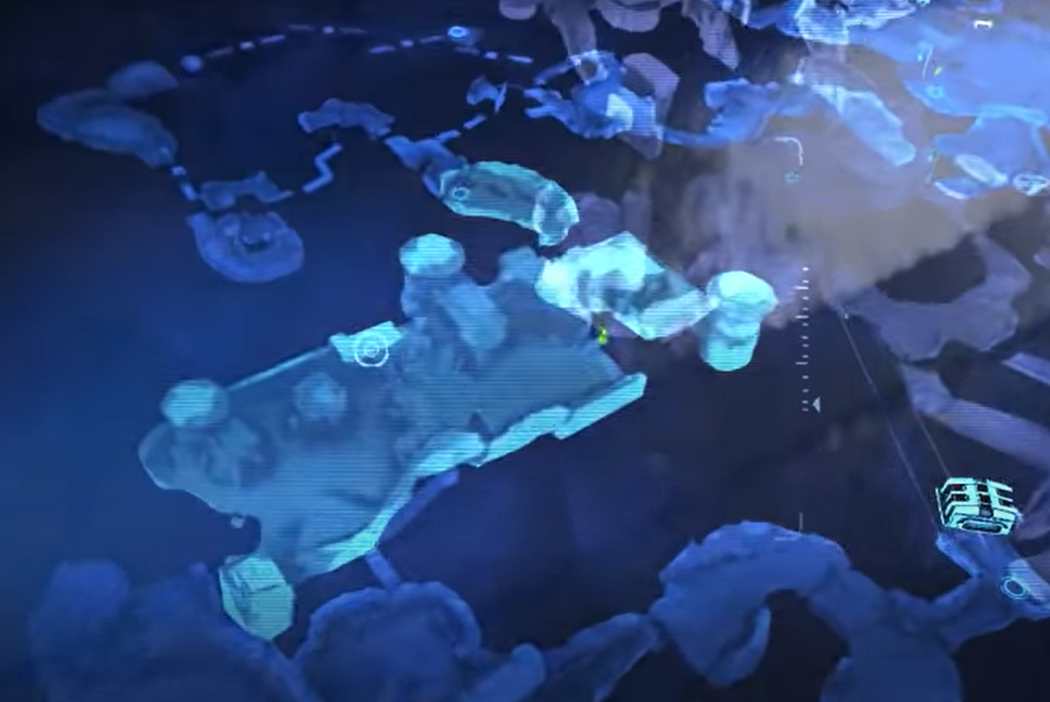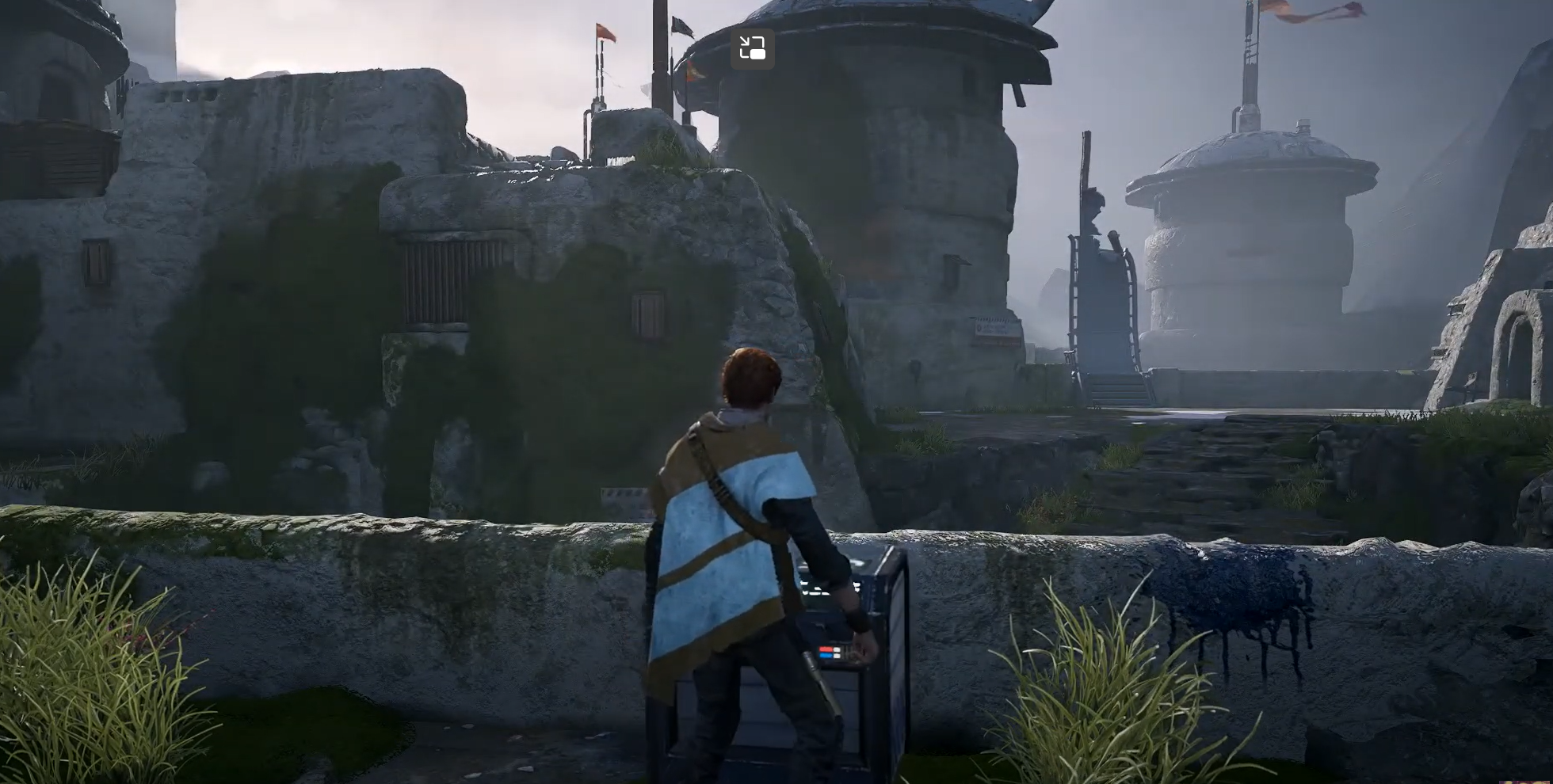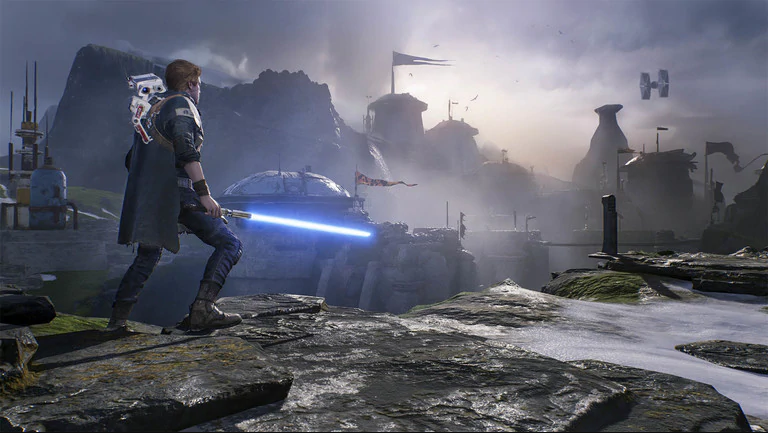The Abandoned Village was a village located on the cold planet Zeffo. The settlement was near the Derelict Hangar, the Turbine Facility, and the Weathered Monument. It was founded by Galactic Republic archaeologists and pioneers. During the Imperial Era, the Galactic Empire occupied the village as part of Project Auger excavation work.
Before being abandoned by 14 BBY, it housed several inhabitants, including Mirienna and Sienna—all displaced because of the occupation. In the aftermath, Mirienna and Sienna survived, and the village was abandoned. The settlement was later inhabited by fauna, such as the scazz, leading to constant attacks on the Imperial garrison stationed. In 14 BBY, fugitive Jedi Padawan Cal Kestis came across the village in his quest to restore the Jedi Order.

The layout of the Abandoned Village
The Abandoned Village consisted of ten buildings located on the cold planet Zeffo. The village had a cliff on one side, a large ravine encompassing two sides, and a mountain wall on the fourth. It was close to the Derelict Hangar, where starships could land and trade with the villagers, and the Turbine Facility, a run-down facility that operated several turbines. The Weathered Monument, a statue created by the ancient technologically advanced Zeffonians, could be seen from the village. The village was built in a multilevel area between two mountain peaks. There were at least three entrances to the settlement: two from the Derelict Hangar and one from the Turbine Facility.
It could be entered from the Turbine Facility by traveling through a cave that included a bridge across a ravine. The village was also accessible from the Derelict Hangar through a long winding pathway along the mountain's edge. The path to the village also contained a metal bridge that had been destroyed by the year 14 BBY. The bridge led into a pathway dotted with wide stone slabs near the outskirts of the settlement, which ended within a rooftop structure in the village. Many buildings were separated from the main settlement by a large turbine. A shortcut could be accessed through a blast door in the Derelict Hangar that led into a tunnel and later to the rooftop of a house.

The village by 14 BBY
Much of the village's architecture utilized stone in round, curved shapes, and many buildings were decorated with banners filled with colorful imagery. Metal bridges on the rooftops connected these buildings, one of which connected a home close to a waterfall to the rest of the village in between a deep ravine. The ravine contained a river flowing into another waterfall beside the village, which ran into a body of water below the mountain.
By 14 BBY, several GX-8 Moisture Vaporators surrounded the village, some of which were located on the rooftops of the buildings. Many of the metal bridges were destroyed and were inhabited by local fauna, such as the subterranean, verminous scazz, and at least one nearby jotaz—large and highly aggressive predators native to Zeffo. By then, many buildings were covered in snow and moss, with old pots lining the village streets, overgrown with grass.
The village was established by a small community of Galactic Republic archaeologists and pioneers. After Order 66 in 19 BBY, an order programmed in the behavioral modification biochips in clone troopers to execute the Jedi for treason against the Galactic Republic, the villagers found the Crash Site of a Republic Venator-class Star Destroyer that had crashed after a battle against a Separatist dreadnought. They built a memorial for the fallen clone troopers on the crashed ship.

The Empire occupied the village and forced its inhabitants out.
By 14 BBY, the Galactic Empire arrived on Zeffo and initiated Project Auger, an Imperial project to excavate Zeffonian artifacts of value for the Galactic Emperor, with excavations beginning almost immediately. As part of the project's goals, the Empire occupied the village and redistributed its inhabitants by forcing them from their homes and shipping them to labor camps through Imperial Code 94364. The code forbade selling or trading without proper authorization and also stated that the villagers' property and belongings were to be protected by the Empire's 201st Squadron, which General Markon led.
While the inhabitants were being relocated, the villager Ostar distracted several Imperial stormtroopers to allow his wife, Mirienna, and his daughter, Sienna, to escape. Mirienna and Sienna survived and were free from the Empire's forced relocation efforts on the planet; however, the village became abandoned and swept by the strong gusty winds of Zeffo. In 14 BBY, two scout troopers attacked and killed a scazz on the edge of the village. That year, fugitive Jedi Padawan Cal Kestis explored the village and fought against stormtroopers, standard scout troopers, and Scout Trooper Commanders to reach the Tomb of Eilram and later the Tomb of Miktrull.
While there, Kestis used a Force ability called psychometry to learn what happened before he arrived. During his exploration, he opened one chest by a stone wall on the edge of the settlement that contained enough durite to construct a lightsaber handle. He also opened two chests positioned on rooftops, one containing a sleeve for the Duty and Resolve lightsaber and one containing the material for the Guardian outfit.

Jean-Francois Rey's concept art of the village
The Abandoned Village was created for the video game Star Wars Jedi: Fallen Order, developed by Respawn Entertainment and published by Electronic Arts on November 15, 2019. The location was first revealed in the game's Xbox E3 Briefing on June 10, 2019. Artist Jean-Francois Rey created concept art of the village.
Like the rest of the game, the location was heavily influenced by 3D Metroidvania type design—an action-adventure subgenre defined by large, interconnected maps containing paths that can be unlocked as the player progresses through the game. It was the first environment designed and was given simple shapes to evoke familiarity and strong readability. In one set of concept art, it was depicted as being situated at the edge of a mountain, and the buildings there were pictured as being more triangular.
- The Art of Star Wars Jedi: Fallen Order